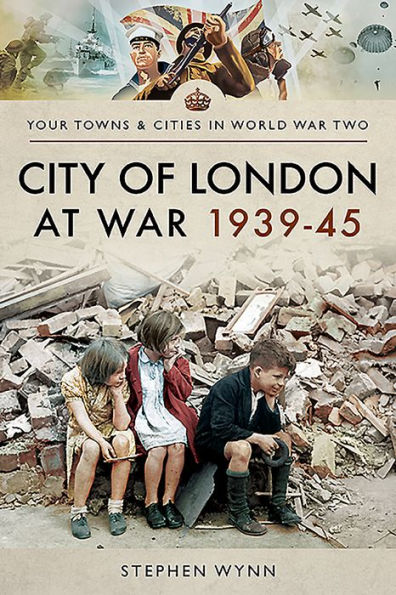City of London at War 1939-45
The City of London was always going to be an obvious target for German bombers during the Second World War. What better way for Nazi Germany to spread fear and panic amongst the British people than by attacking their capital city? Although not vastly populated in the same way that a bigger city or larger town would be, there were still enough people working there during the day for attacks on it to take their toll. The city’s ancient and iconic buildings also bore the brunt of the German bombs, including churches designed by Sir Christopher Wren after the Great Fire in 1666.The book looks at the effects of war on the City of London, including the damage caused by the 8 months of the Blitz between September 1940 and May 1941. The most devastating of the raids took place on 29 December 1940, with both incendiary and explosive bombs causing a firestorm so intense it was known as the Second Great Fire of London.It also looks at the bravery of the staff at St Bart's Hospital, which was one of the medical facilities that remained open during the course of the war. Other stories include the sterling work carried out by the City’s civilian population and the different voluntary roles that they performed to help keep the city safe, including the Home Guard and the Fire Watchers, who spent their nights on the city’s rooftops looking out for incendiary devices dropped by the German Luftwaffe.Despite the damage to its buildings and its population, by the end of the war the City of London was able to rise, like a phoenix, from the flames of destruction, ready to become the vibrant and flourishing borough that it is today.
1132759423
City of London at War 1939-45
The City of London was always going to be an obvious target for German bombers during the Second World War. What better way for Nazi Germany to spread fear and panic amongst the British people than by attacking their capital city? Although not vastly populated in the same way that a bigger city or larger town would be, there were still enough people working there during the day for attacks on it to take their toll. The city’s ancient and iconic buildings also bore the brunt of the German bombs, including churches designed by Sir Christopher Wren after the Great Fire in 1666.The book looks at the effects of war on the City of London, including the damage caused by the 8 months of the Blitz between September 1940 and May 1941. The most devastating of the raids took place on 29 December 1940, with both incendiary and explosive bombs causing a firestorm so intense it was known as the Second Great Fire of London.It also looks at the bravery of the staff at St Bart's Hospital, which was one of the medical facilities that remained open during the course of the war. Other stories include the sterling work carried out by the City’s civilian population and the different voluntary roles that they performed to help keep the city safe, including the Home Guard and the Fire Watchers, who spent their nights on the city’s rooftops looking out for incendiary devices dropped by the German Luftwaffe.Despite the damage to its buildings and its population, by the end of the war the City of London was able to rise, like a phoenix, from the flames of destruction, ready to become the vibrant and flourishing borough that it is today.
29.95
In Stock
5
1

City of London at War 1939-45
224
City of London at War 1939-45
224
29.95
In Stock

Product Details
| ISBN-13: | 9781526708304 |
|---|---|
| Publisher: | Pen and Sword |
| Publication date: | 06/10/2020 |
| Series: | Your Towns & Cities in World War Two |
| Pages: | 224 |
| Product dimensions: | 6.00(w) x 9.25(h) x (d) |
About the Author
From the B&N Reads Blog
